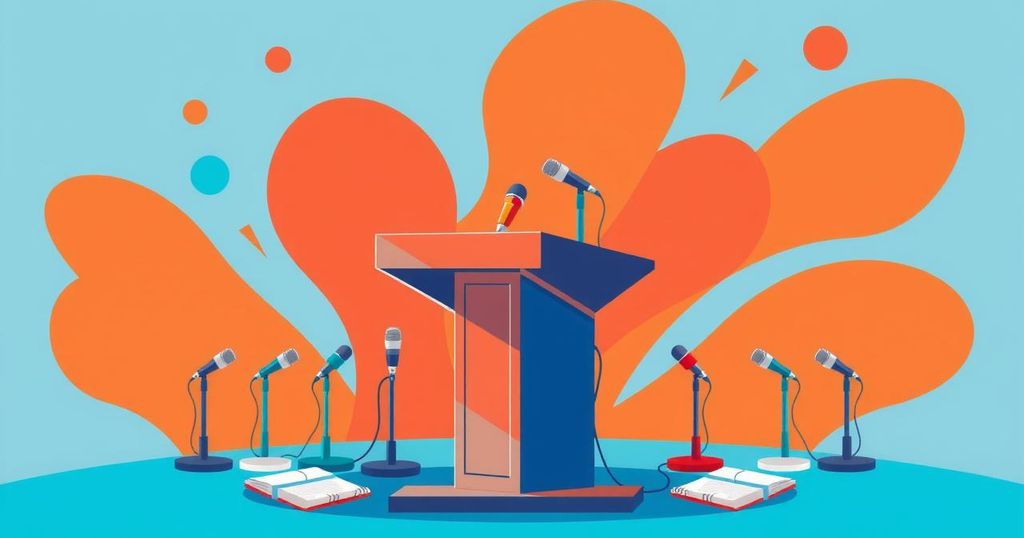Argentina is exploring a controversial plan wherein voters may choose journalists who cover President Javier Milei’s events, alongside a proposed “mute” button for persistent reporters. This approach is akin to strategies seen during Donald Trump’s presidency and highlights Milei’s preference for direct communication with the public, often through social media.
The Argentine presidency, led by President Javier Milei, is contemplating a controversial approach to media access by allowing voters to select the journalists permitted to cover Milei’s public events. Additionally, there is a proposal for a “mute” button that would silence persistent reporters. Manuel Adorni, Milei’s spokesperson, humorously acknowledged the proposed button, suggesting it would be useful when a reporter monopolizes the mic or repeats questions excessively.
Adorni, while emphasizing the need for changes to current press access procedures, confirmed the intention to create a system where journalists from the presidential press corps would be elected by the public. This voting process is intended to foster a sense of representation among citizens. He further engaged the audience on social media, soliciting public opinion on which journalists should remain in or exit the press room.
These proposals have drawn parallels to strategies employed by former U.S. President Donald Trump, who, similarly, sought to alter media access ways during his presidency. Trump’s administration, addressing adversarial relationships with the media, announced a future strategy to dictate journalist accreditation for White House events, moving away from traditional methods maintained for decades.
President Milei shares Trump’s tendency to communicate directly with the public via social media, often bypassing conventional news outlets. In his time in office thus far, he has refrained from holding formal press conferences, choosing instead to engage with supporters online where his messaging is enhanced by a dedicated follower base.
President Javier Milei’s administration is pursuing an innovative yet controversial media approach, potentially allowing public voting on press access and considering a mute function for nonstop questioning. These measures reflect a broader trend among populist leaders like Donald Trump, emphasizing direct communication with the electorate while challenging traditional media frameworks. As these proposals advance, it will be important to monitor their implications for press freedom and journalistic integrity in Argentina.
Original Source: www.dailysabah.com




